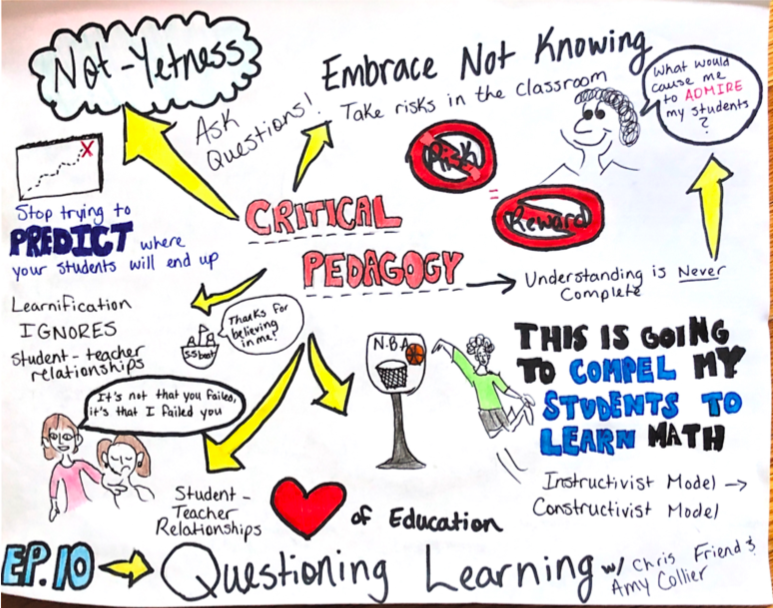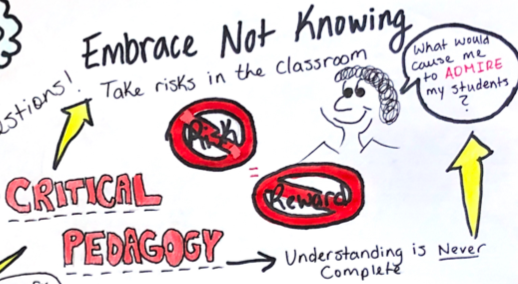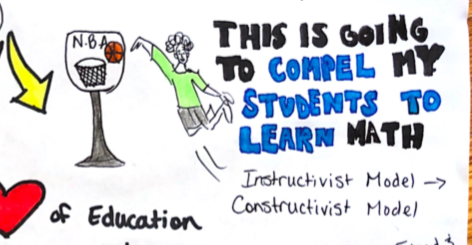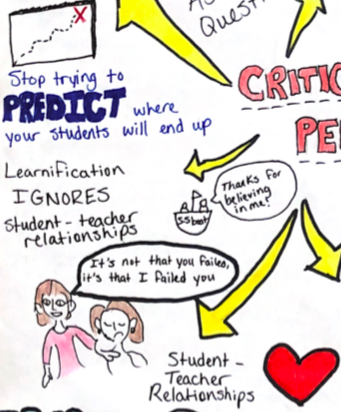
For my multimedia reflection, I chose to listen to Chris Friend’s podcast titled Questioning Learning featuring Amy Collier. I was immediately interested in Collier’s idea of Not-Yetness, and how integrating critical pedagogy in the classroom is beneficial for the long-term success of students.
First of all, let me just say that drawing this sketchnote was very much out of my comfort zone; I’m not very artistically inclined, but I am a visual learner, which is why I thought this would be a good fit. In the centre of my sketchnote is the idea of critical pedagogy, this is what Collier describes as “the notion of asking questions and being comfortable asking questions, to embrace not always having clear answers”. Embracing the fact that you don’t know everything there is to know about the subject you’re teaching creates a safe environment where students are in control of their learning. It allows us, the teachers, to take risks in the classroom. No risk, no reward, right?
Adding onto the idea of “embracing not knowing” is Collier’s idea that Understanding is Never Complete. There are always new concepts to learn, and information that can be added onto what you already know.

My favourite part of the podcast was when Collier gave the example of the math teacher who played a video of him standing on a basketball court holding a basketball, aiming for the hoop. He launches the basketball and then stops the video, while the ball is halfway through its arc. His students immediately ask, “Did he make it?” This creates a sense of uncertainty and curiosity. This math teacher isn’t saying “My students are going to learn this formula”, he’s saying “This is going to COMPEL my students to learn”. I chose to colour “compel students to learn” in a different colour because I believe that this is an idea that should be integrated into every subject we teach. Making students want to learn is the most efficient way to get them to learn.

Another idea Chris and Amy bring up throughout the podcast is the idea of learnification, and how when you exclusively use an “instructivist model” in your classroom, you tend to lose the student-teacher relationship; which really is the heart of education. I’ve always believed that learning in the classroom should be focused on the learner, aka a “constructivist model”, and that when we stop using learning outcomes as a “map” and saying things like “all students should be at the exact same place by the end of my lesson” amazing things tend to happen. It’s not about a measurable outcome, rather, it’s about asking yourself “what could my students know at the end of the semester that would make me happy? That would make me admire them?”

In conclusion, Collier and Friend talk in detail about critical pedagogy and how to incorporate it into everyday teachings. The idea of creating a comforting classroom environment is very important to me, as I know how important that can be for a middle/high school student. Being a teenager is tough, and I want to make sure I can create a happy environment where my students feel supported and excited to learn.
